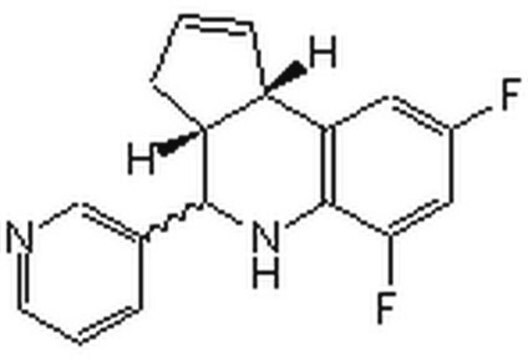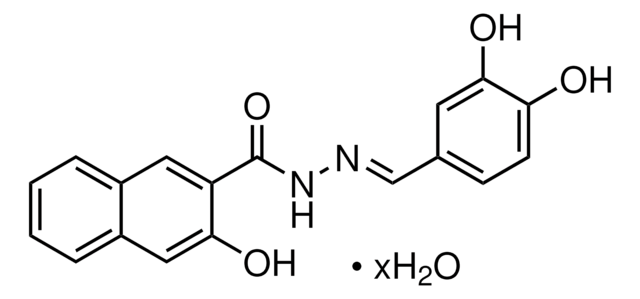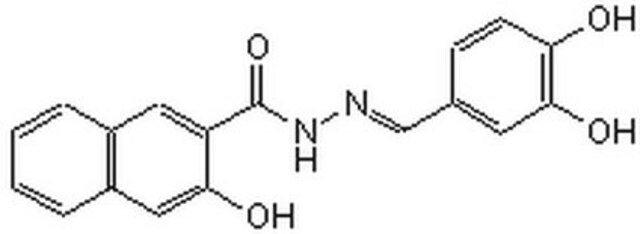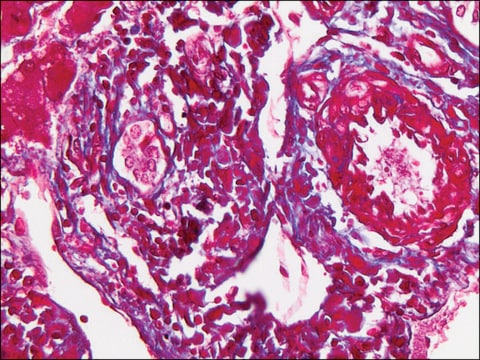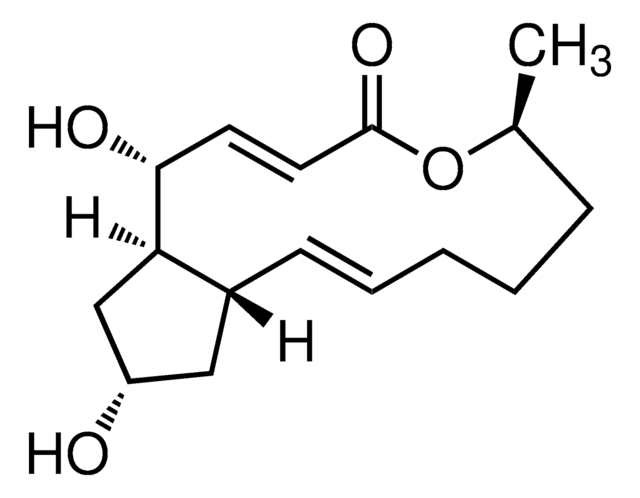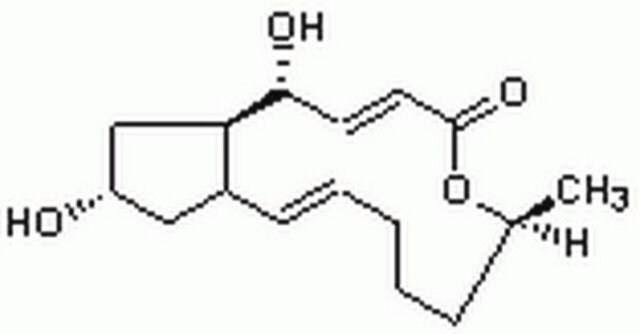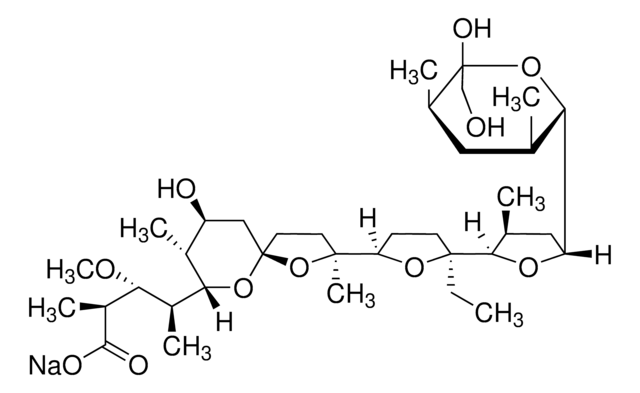Key Documents
G0923
Golgicide A
≥98% (HPLC)
Synonim(y):
6,8-Difluoro-4-pyridin-3-yl-3a,4,5,9b-tetrahydro-3H-cyclopenta[c]quinoline, CID 25113626, GCA
About This Item
Polecane produkty
Poziom jakości
Próba
≥98% (HPLC)
Postać
solid
rozpuszczalność
DMSO: >10 mg/mL
temp. przechowywania
room temp
ciąg SMILES
Fc1cc(F)c2NC([C@@H]3CC=C[C@@H]3c2c1)c4cccnc4
InChI
1S/C17H14F2N2/c18-11-7-14-12-4-1-5-13(12)16(10-3-2-6-20-9-10)21-17(14)15(19)8-11/h1-4,6-9,12-13,16,21H,5H2/t12-,13+,16?/m0/s1
Klucz InChI
NJZHEQOUHLZCOX-FTLRAWMYSA-N
Zastosowanie
Działania biochem./fizjol.
Cechy i korzyści
Hasło ostrzegawcze
Warning
Zwroty wskazujące rodzaj zagrożenia
Zwroty wskazujące środki ostrożności
Klasyfikacja zagrożeń
Eye Irrit. 2
Kod klasy składowania
11 - Combustible Solids
Klasa zagrożenia wodnego (WGK)
WGK 3
Temperatura zapłonu (°F)
Not applicable
Temperatura zapłonu (°C)
Not applicable
Certyfikaty analizy (CoA)
Poszukaj Certyfikaty analizy (CoA), wpisując numer partii/serii produktów. Numery serii i partii można znaleźć na etykiecie produktu po słowach „seria” lub „partia”.
Masz już ten produkt?
Dokumenty związane z niedawno zakupionymi produktami zostały zamieszczone w Bibliotece dokumentów.
Klienci oglądali również te produkty
Nasz zespół naukowców ma doświadczenie we wszystkich obszarach badań, w tym w naukach przyrodniczych, materiałoznawstwie, syntezie chemicznej, chromatografii, analityce i wielu innych dziedzinach.
Skontaktuj się z zespołem ds. pomocy technicznej